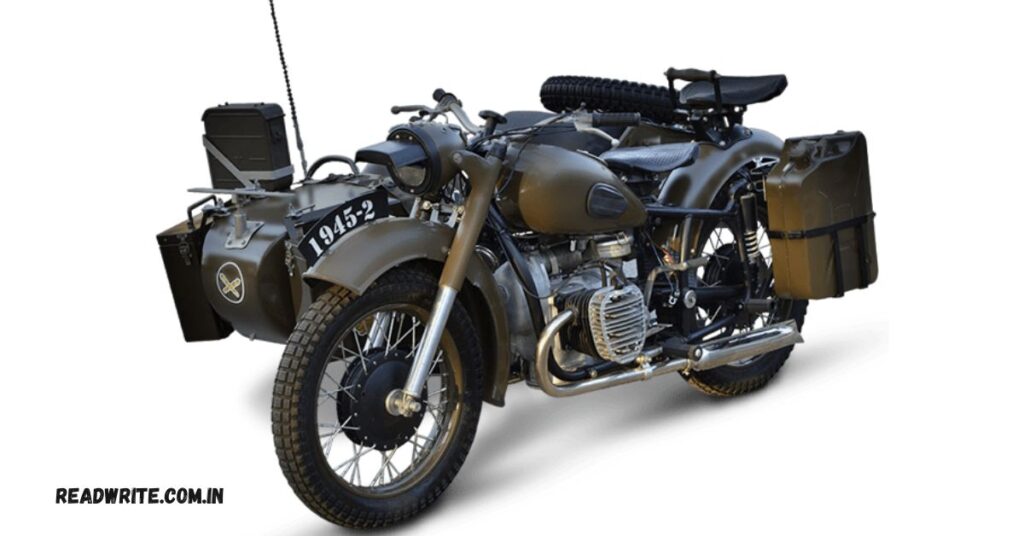Old-fashioned military motorcycles hold a special place in the annals of transportation and warfare history. These rugged machines were more than just vehicles; they were essential tools for communication, reconnaissance, and mobility during times of conflict. Today, they symbolize resilience, innovation, and a bygone era of military ingenuity.
In this blog post, we’ll explore the fascinating story of old-fashioned military motorcycles, their evolution, iconic models, and their lasting impact on modern motorcycles and enthusiasts.
The Birth of Military Motorcycles
The Early 20th Century: Motorcycles Join the Ranks
The use of motorcycles in the military began in the early 1900s, during World War I. Before motorcycles, cavalry and bicycles were commonly used for communication and reconnaissance. However, the need for faster, more reliable transport led to the adoption of motorcycles.
Early military motorcycles were often modified versions of civilian bikes, equipped with features like sidecars, cargo racks, and rugged tires to handle rough terrain. These motorcycles quickly proved invaluable for:
- Message Dispatching: Delivering messages across battlefields more swiftly than horses.
- Reconnaissance: Providing mobility to scouts.
- Medical Aid: Transporting injured soldiers or supplies.
World War I: The Rise of Old-Fashioned Military Motorcycles
During World War I, motorcycles gained prominence as essential tools for the Allied and Central Powers. Harley-Davidson and Indian, two American motorcycle manufacturers, supplied thousands of bikes to the military.
Key Models of the Era
- Harley-Davidson Model J
- Features: Rugged frame, 15-horsepower engine, and sidecar compatibility.
- Contribution: Used for dispatch duties and troop transport.
- Indian Powerplus
- Features: 1000cc V-twin engine, robust design for battlefield conditions.
- Contribution: Known for its reliability and performance under extreme conditions.
These motorcycles were equipped to navigate muddy trenches, carry heavy loads, and withstand the harsh conditions of war zones, marking their place in military history.
World War II: The Golden Era of Military Motorcycles
Innovations and Standardization
By World War II, motorcycles had become a staple in military operations. Governments worked closely with manufacturers to design motorcycles specifically for wartime needs. These bikes were often:
- Lightweight: For quick maneuverability.
- Durable: Built to endure rugged terrains and harsh weather.
- Versatile: Adaptable for carrying sidecars, weapons, or radio equipment.
Iconic Old-Fashioned Military Motorcycles of WWII
- Harley-Davidson WLA
- Nicknamed the “Liberator,” this model was widely used by Allied forces.
- Features: 45-cubic-inch engine, blackout lights, and leather saddlebags.
- Role: Ideal for dispatch, reconnaissance, and escort missions.
- BMW R75
- A German masterpiece known for its robust design and off-road capabilities.
- Features: Sidecar with machine gun mount, two-wheel drive for improved traction.
- Role: Used extensively in the North African campaign and Eastern Front.
- Triumph 3HW
- A British lightweight motorcycle designed for reliability.
- Features: 350cc engine, sturdy frame, and simple maintenance.
- Role: Deployed for communication and scouting missions.
Post-War Use and Decline
After World War II, the role of military motorcycles began to decline. Advancements in technology led to the rise of jeeps and armored vehicles, which offered greater protection and versatility.
However, old-fashioned military motorcycles didn’t disappear completely. They continued to be used for specific tasks, such as:
- Patrols: Especially in areas where lightweight vehicles were advantageous.
- Ceremonial Roles: Featuring prominently in parades and military displays.
The Legacy of Old-Fashioned Military Motorcycles
Influence on Modern Motorcycles
The innovations developed for military motorcycles had a lasting impact on civilian motorcycle designs. Features like rugged suspensions, larger fuel tanks, and reliable engines were adopted by manufacturers for commercial use.
Many classic models, like the Harley-Davidson WLA, inspired modern retro-styled bikes, blending nostalgia with contemporary performance.
Cultural Significance
Old-fashioned military motorcycles have become symbols of freedom, resilience, and mechanical ingenuity. They are celebrated in:
- Museums: Dedicated exhibits showcase their history.
- Movies: Often featured in war films and period dramas.
- Vintage Motorcycle Shows: Enthusiasts restore and display these historical machines.
Collecting and Restoring Old-Fashioned Military Motorcycles
For motorcycle enthusiasts, owning a piece of history is a dream. Restoring and collecting old-fashioned military motorcycles has become a popular hobby, with some rare models fetching high prices at auctions.
Tips for Collectors
- Research: Learn about the history and specifications of the model you’re interested in.
- Authenticity: Ensure the bike has original parts and features.
- Maintenance: Regular upkeep is essential for preserving functionality and value.
Modern Military Motorcycles: A New Era
While old-fashioned military motorcycles hold a special place in history, modern militaries have introduced advanced bikes designed for specific missions. Features like electric engines, stealth capabilities, and all-terrain adaptability define today’s military motorcycles.
However, these high-tech machines owe their roots to the ingenuity of old-fashioned military motorcycles, which paved the way for innovation in two-wheeled transport.
Conclusion
Old-fashioned military motorcycles are more than just relics of the past—they are symbols of innovation, resilience, and a unique chapter in military history. From their humble beginnings in World War I to their iconic roles in World War II, these machines revolutionized transportation on the battlefield.
Their legacy continues to influence modern motorcycles and captivate enthusiasts worldwide. Whether as museum exhibits, restored collectibles, or cultural icons, old-fashioned military motorcycles remind us of the crucial role they played in shaping history.
As we celebrate these vintage machines, we honor their contribution to military strategy and design, ensuring that their stories endure for generations to come.

